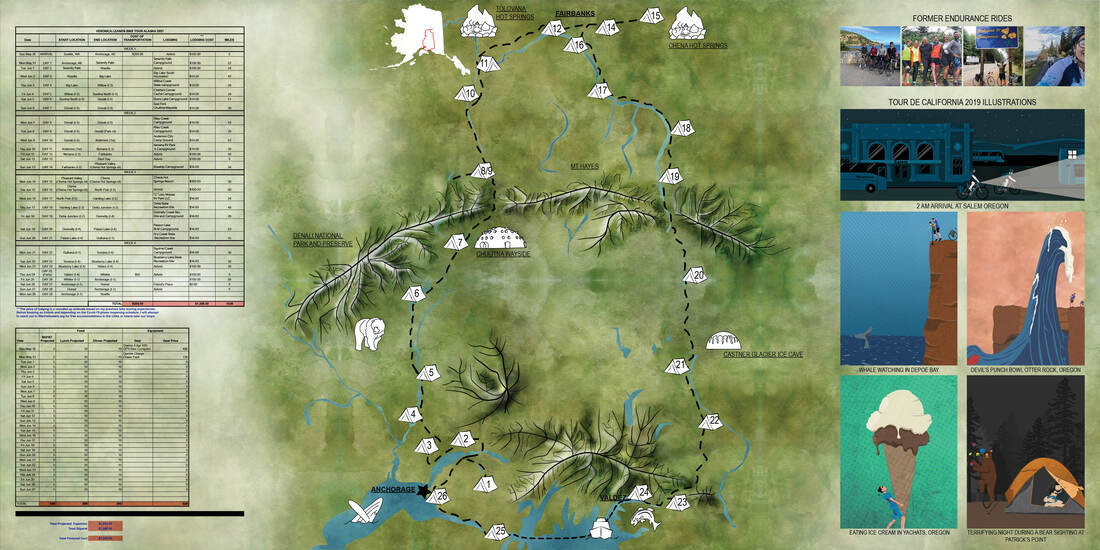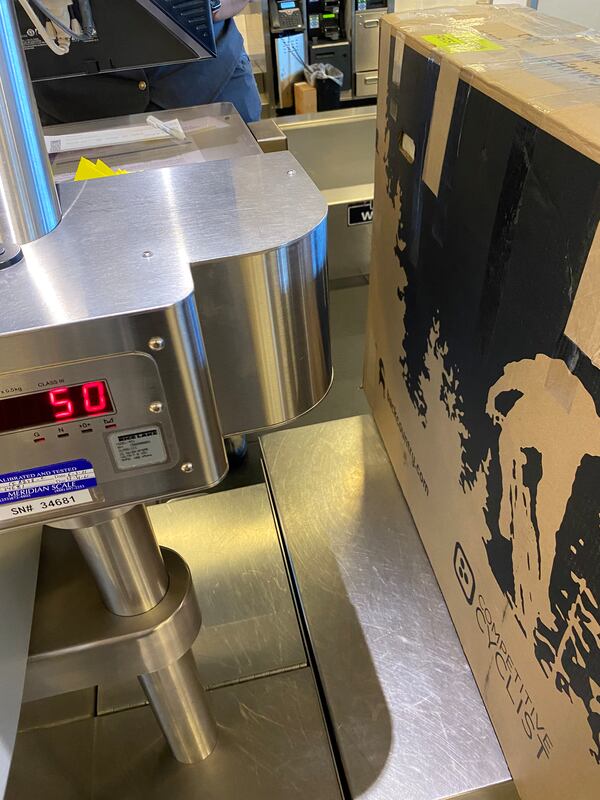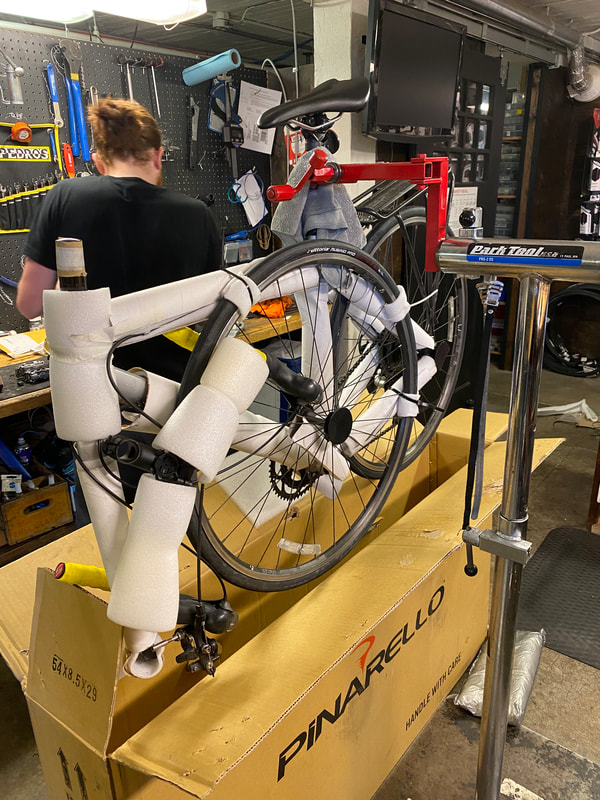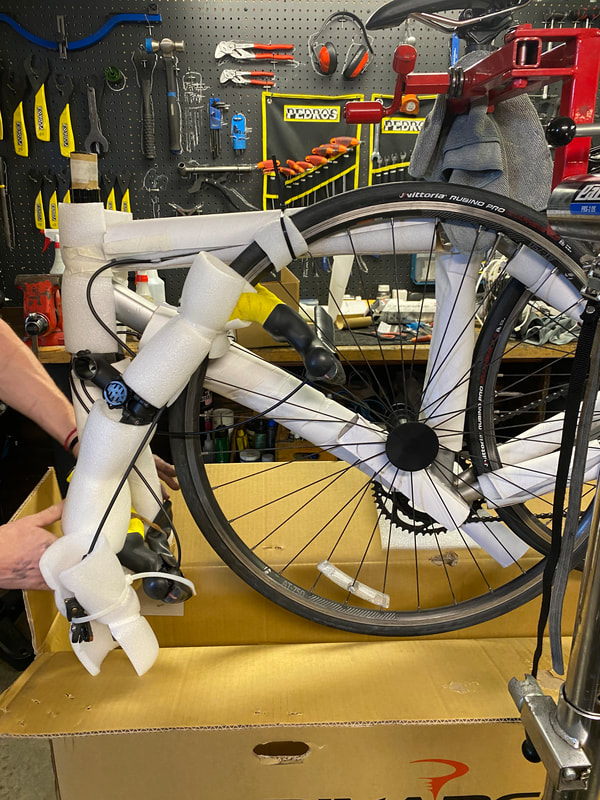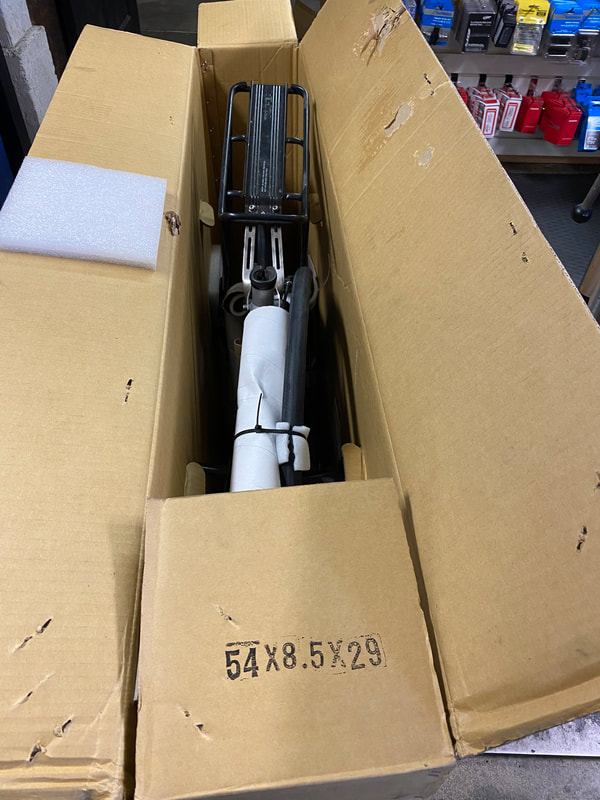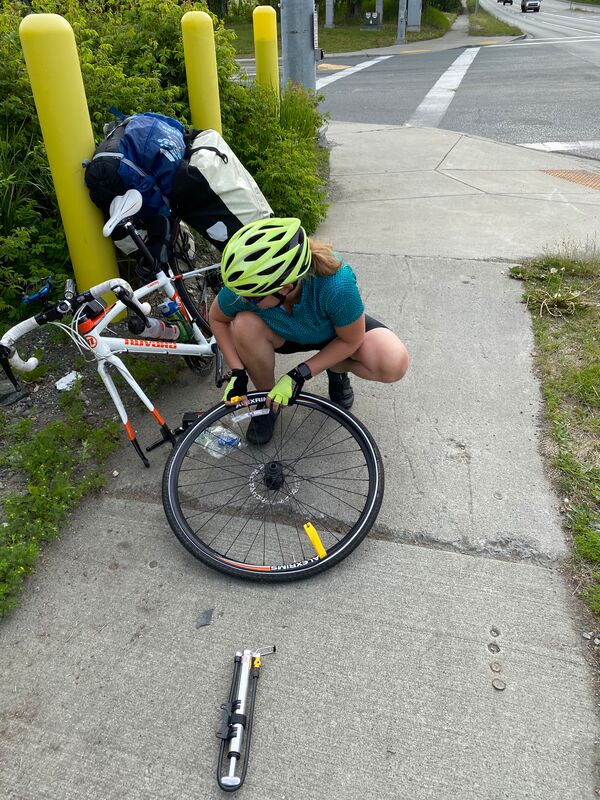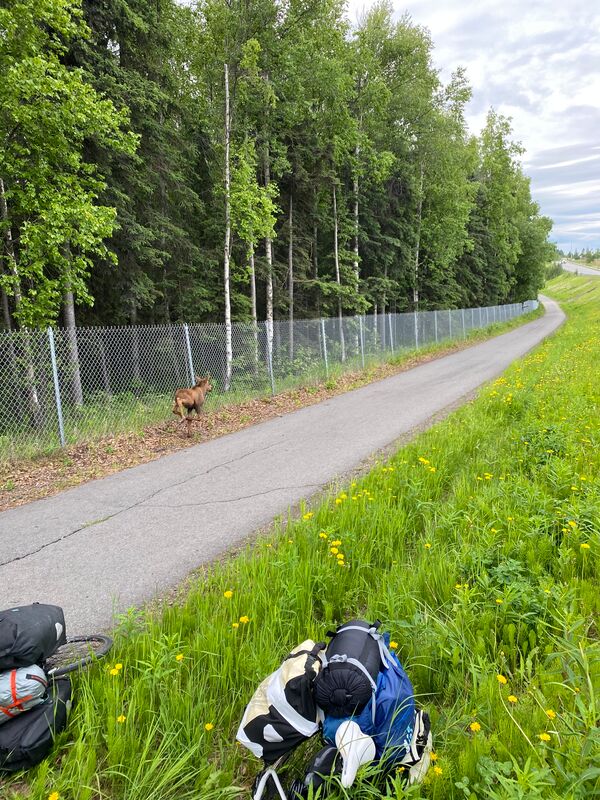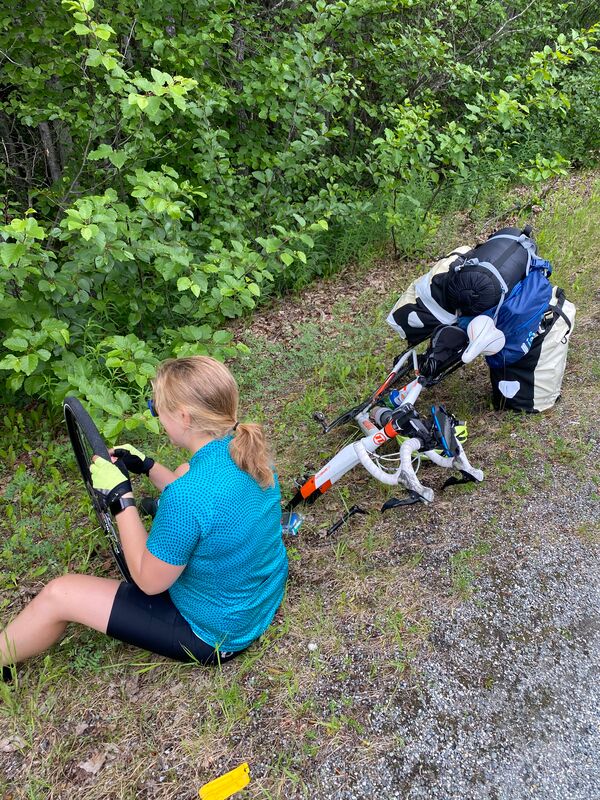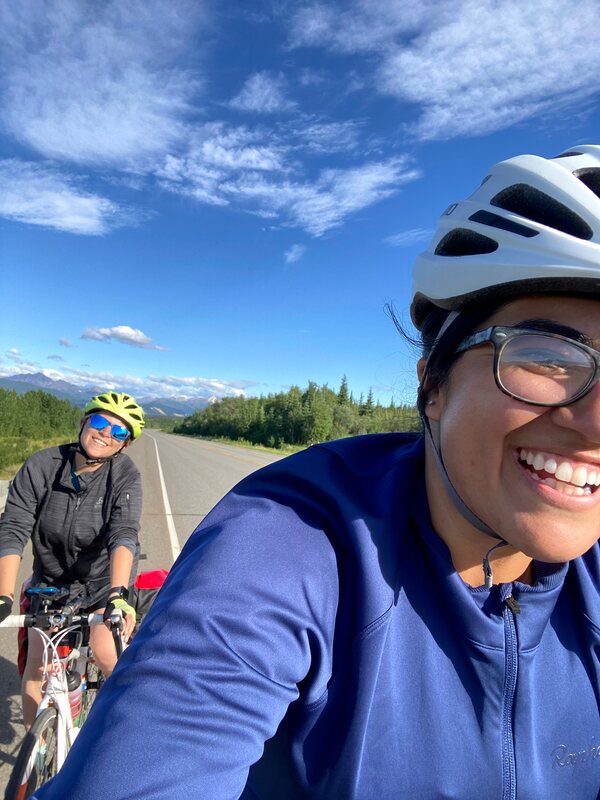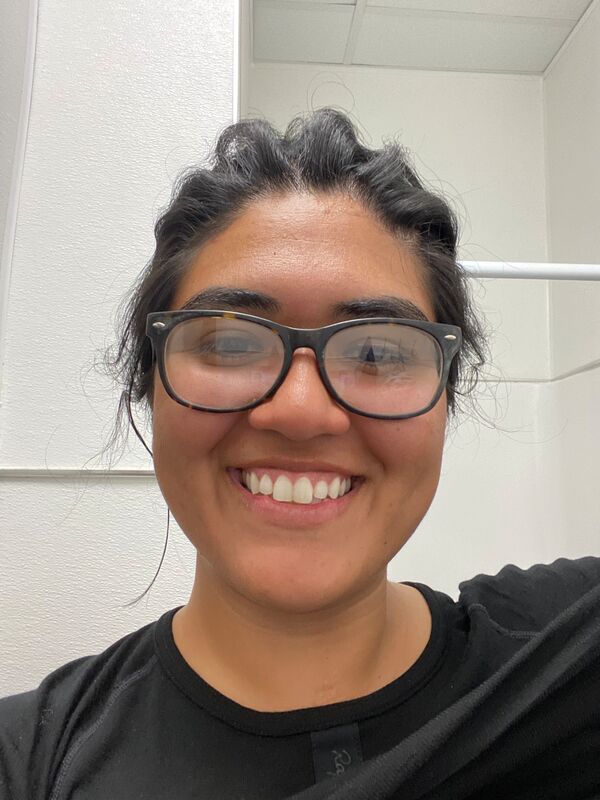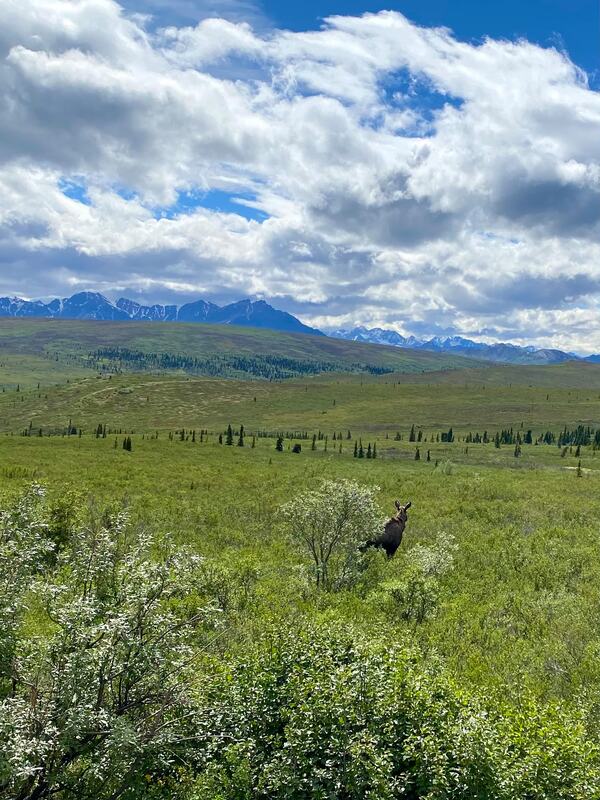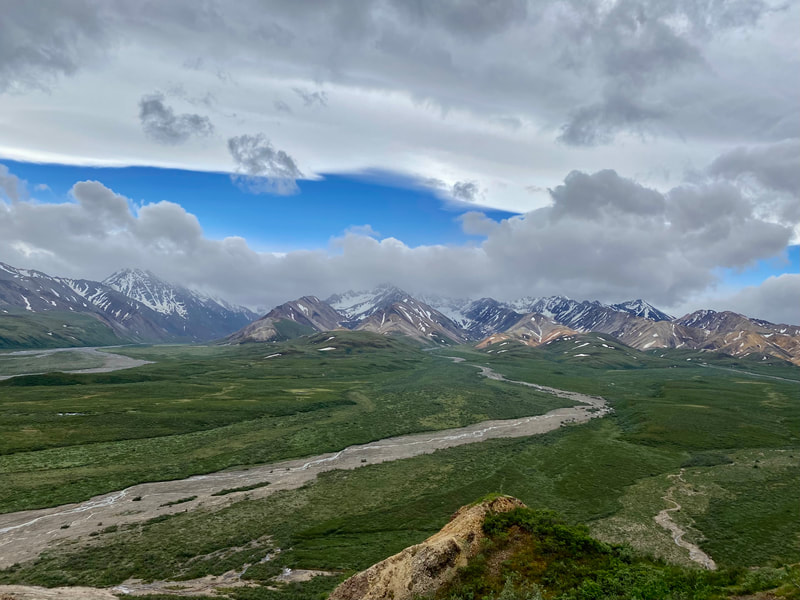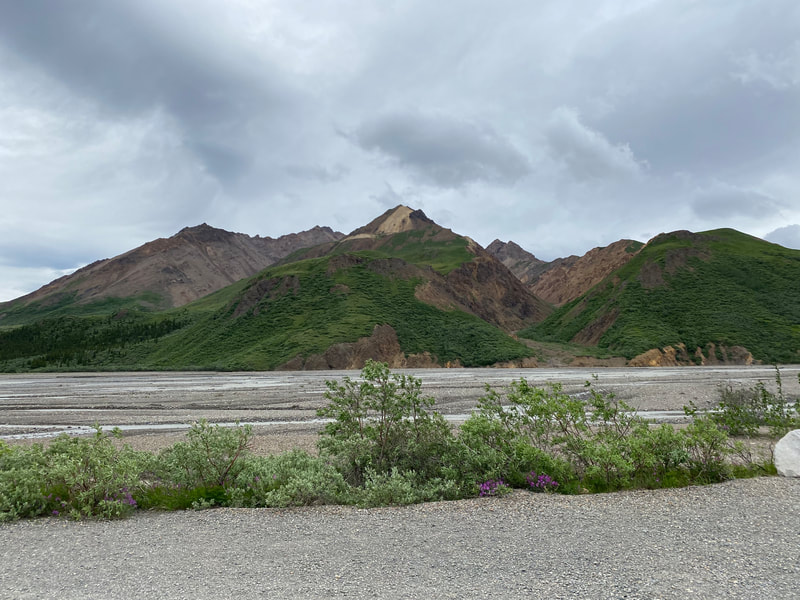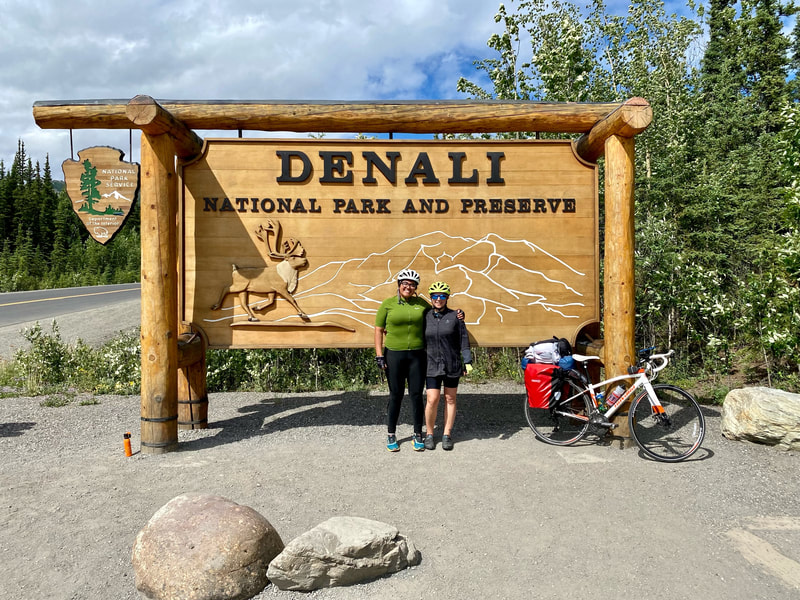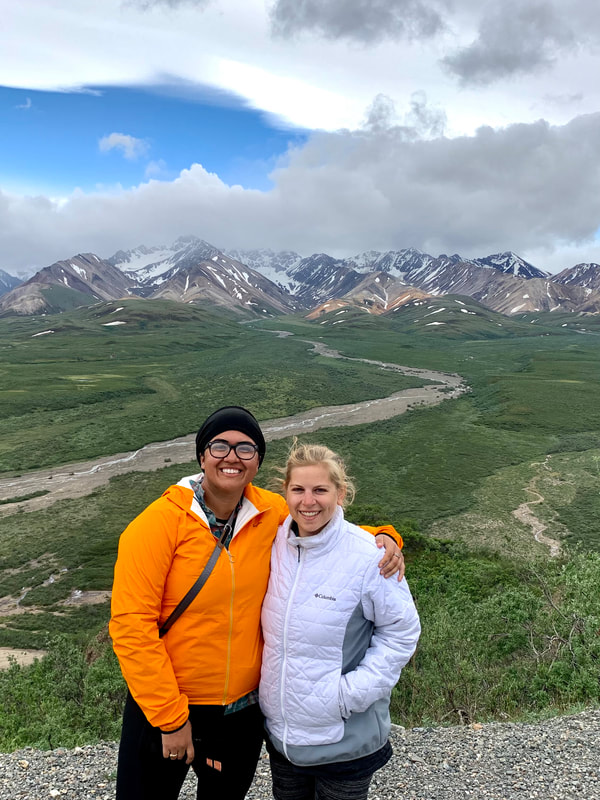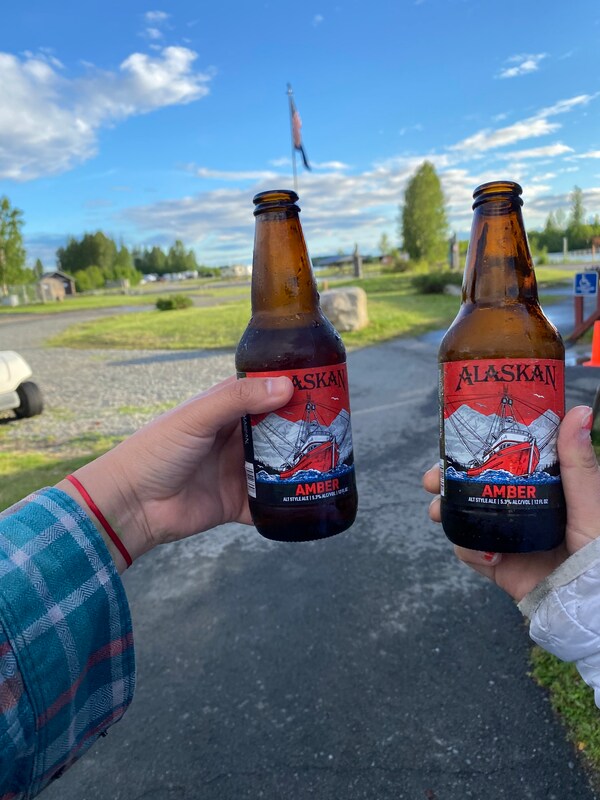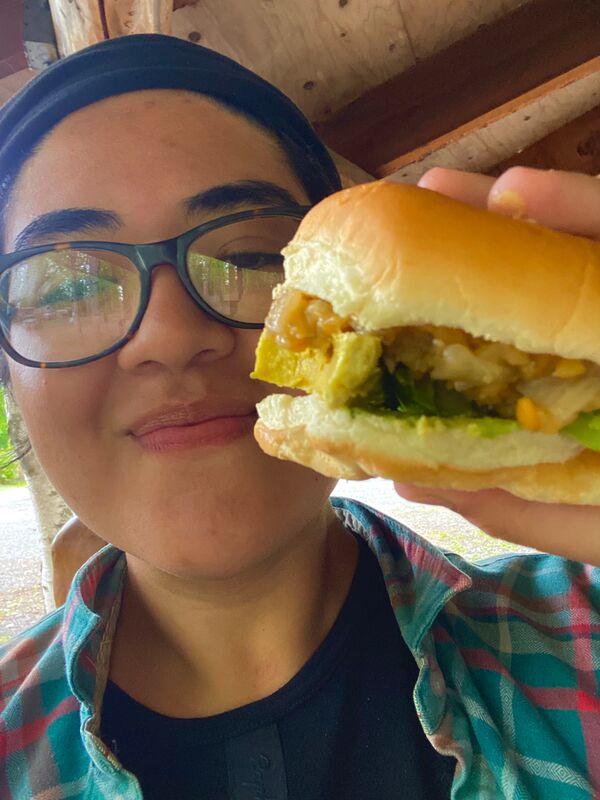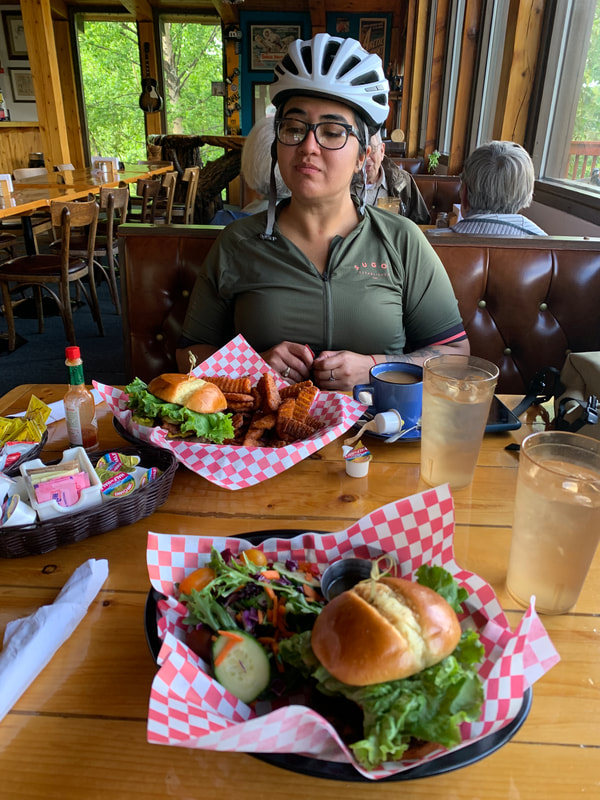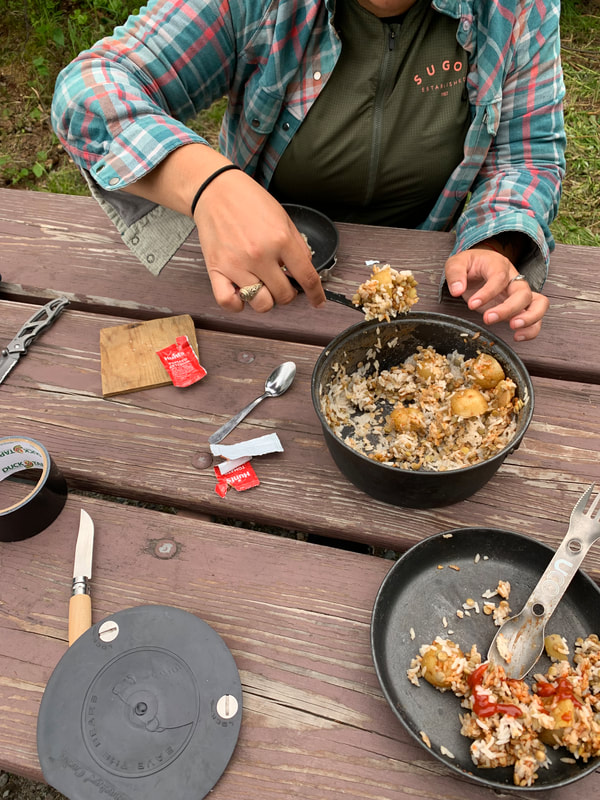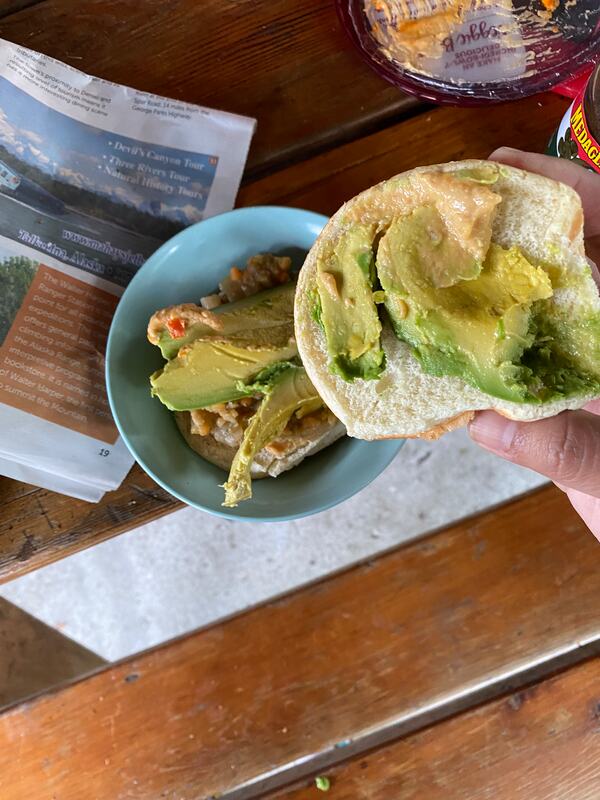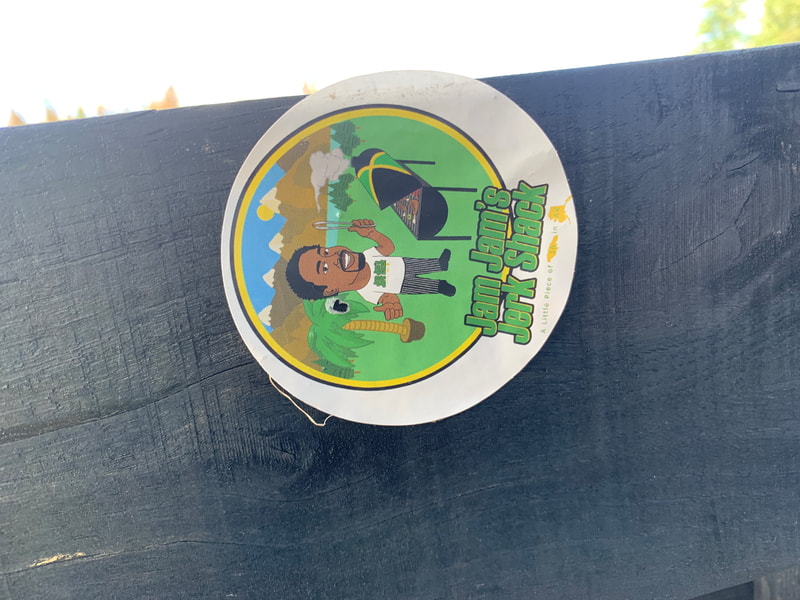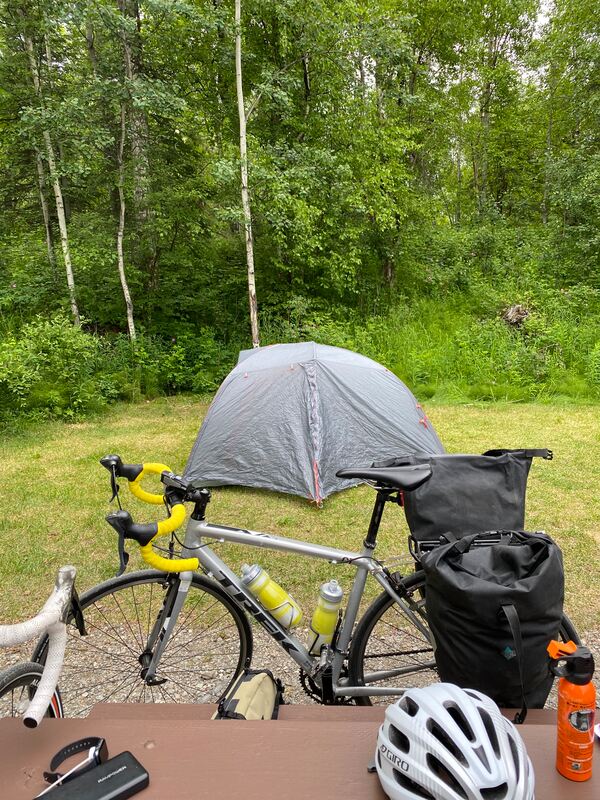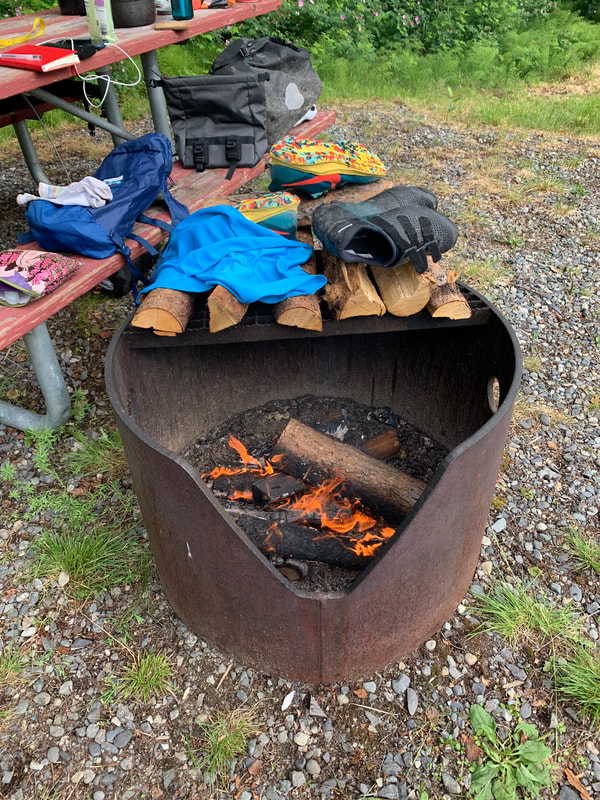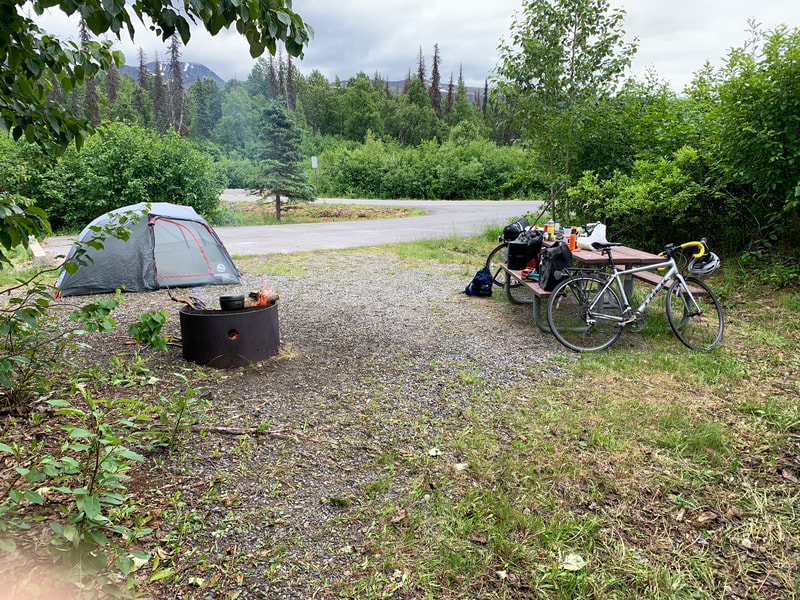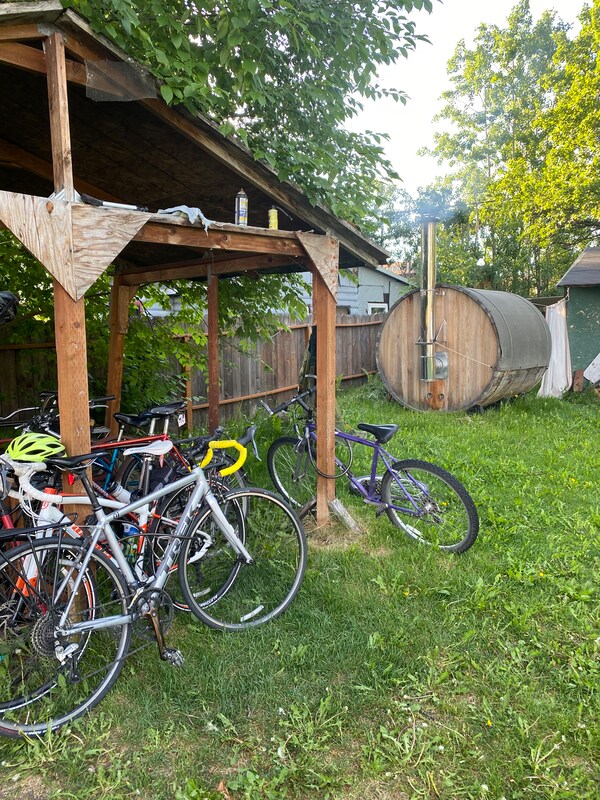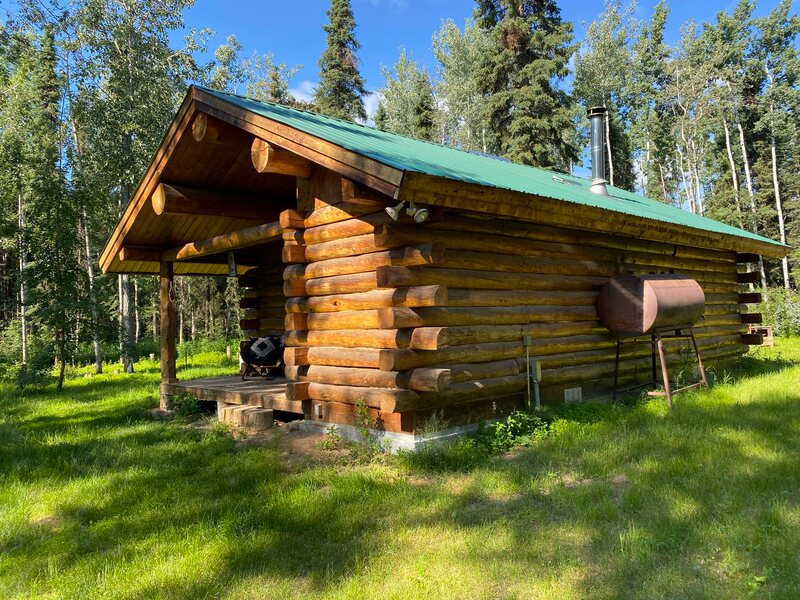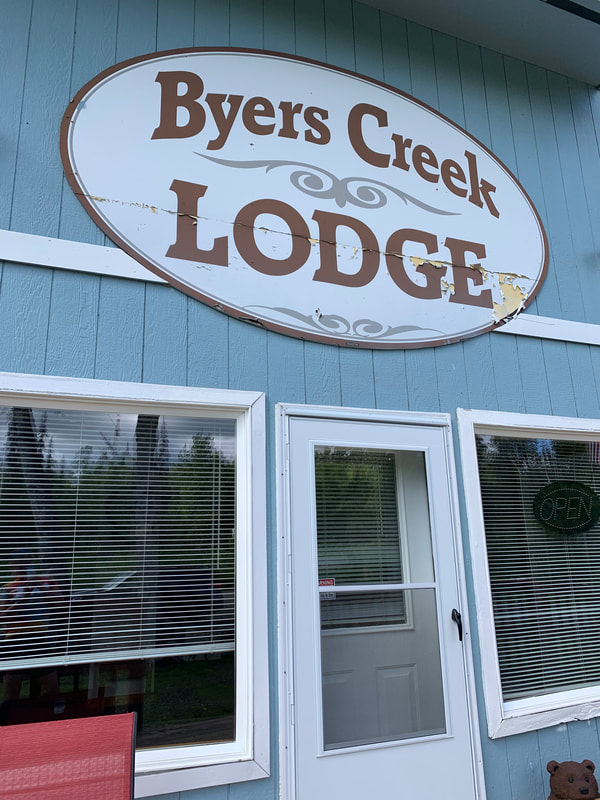TOUR DE AK 2021
Location: Anchorage, Alaska - Fairbanks, Alaska
Total Miles: 400 Miles
Date: June 2021
Duration: 12 Days
Level: Moderate (Due to lack of resources)
Total Miles: 400 Miles
Date: June 2021
Duration: 12 Days
Level: Moderate (Due to lack of resources)
Summary:
My interest in touring in Alaska was initially sparked by a scholarship offered by Lael Wilcox, an ultra-endurance cyclist, to support more women to bike, particularly in Alaska. Although Nina and I didn't receive the scholarship, we remained eager to attempt the tour we proposed. Later that same month I transitioned out of a job and took this as the perfect opportunity to embark on this bike tour. Despite not receiving the scholarship and being recently unemployed, I continued to pursue my passion for bike touring. I would later get three job offers while touring and accept the position I am in today.
Biking from Anchorage to Fairbanks during the summer solstice was an exhilarating and challenging adventure. The long days provided ample daylight to cover the nearly 400-mile distance between the two cities in 12 days. Along the way, we passed through small towns and villages, such as Talkeetna and Nenana, where we stopped to rest and refuel. We encountered Alaska's abundant wildlife, including mosquitoes, moose, caribou, porcupines, and bears. Riding along the rugged terrain, including rolling hills, pristine lakes, and dense forests was tiring but we were elated with our journey.
My interest in touring in Alaska was initially sparked by a scholarship offered by Lael Wilcox, an ultra-endurance cyclist, to support more women to bike, particularly in Alaska. Although Nina and I didn't receive the scholarship, we remained eager to attempt the tour we proposed. Later that same month I transitioned out of a job and took this as the perfect opportunity to embark on this bike tour. Despite not receiving the scholarship and being recently unemployed, I continued to pursue my passion for bike touring. I would later get three job offers while touring and accept the position I am in today.
Biking from Anchorage to Fairbanks during the summer solstice was an exhilarating and challenging adventure. The long days provided ample daylight to cover the nearly 400-mile distance between the two cities in 12 days. Along the way, we passed through small towns and villages, such as Talkeetna and Nenana, where we stopped to rest and refuel. We encountered Alaska's abundant wildlife, including mosquitoes, moose, caribou, porcupines, and bears. Riding along the rugged terrain, including rolling hills, pristine lakes, and dense forests was tiring but we were elated with our journey.
Bike:
Our first task was to learn how to disassemble our bikes and pack them safely in a box for transport. It was a process that required careful attention to detail and a keen eye for potential issues. We removed the pedals, seat, and handlebars, carefully wrapping them in padding to protect them from scratches and other damage during transit. The wheels came next, with each tire deflated, and removed the front tire from the frame. The derailleur and chain were carefully wrapped in protective material as well, ensuring that nothing would get tangled or damaged during transport. Everything was then Layered carefully and used clothes as extra padding in areas where there would be the most pressure. The goal was to create a secure, snug fit that would keep everything in place during transit. We also had to be mindful of airline weight restrictions as well to avoid any extra fees.
Our first task was to learn how to disassemble our bikes and pack them safely in a box for transport. It was a process that required careful attention to detail and a keen eye for potential issues. We removed the pedals, seat, and handlebars, carefully wrapping them in padding to protect them from scratches and other damage during transit. The wheels came next, with each tire deflated, and removed the front tire from the frame. The derailleur and chain were carefully wrapped in protective material as well, ensuring that nothing would get tangled or damaged during transport. Everything was then Layered carefully and used clothes as extra padding in areas where there would be the most pressure. The goal was to create a secure, snug fit that would keep everything in place during transit. We also had to be mindful of airline weight restrictions as well to avoid any extra fees.
The Ride:
Cycling in, Alaska was an adventure with unpredictable weather. Even during the summer solstice, temperatures can be cool, and rain can be frequent. Additionally, the wind can be a factor, especially in more exposed areas. The rain on day 2 made for a damp and uncomfortable ride, and upon arriving at the campground, Nina discovered her panniers were not suitable for the rain and falling apart. We were able to get a fire going and dry off, which provided some much-needed relief from the cold and wet conditions. However, as the night went on, I began to experience hallucinations and realized that I was dehydrated. This was a terrifying experience but was able to recognize the signs of dehydration and took action by drinking electrolytes, resting, and calling a friend to calm me down at this moment. Despite the challenges and initial doubt of this particular day, it was important to remember that setbacks and unexpected challenges are a part of any day. We overcame this day, Nina got new panniers delivered, and we had a great rest of our trip.
The main route between Anchorage and Fairbanks is the George Parks Highway, which is a two-lane road that is well-paved and well-marked. The highway is also relatively flat, with some rolling hills, making it a great option for cyclists of all skill levels. However, the terrain became challenging after we passed Denali National Park, the elevation became mountainous making cycling more difficult, especially when carrying heavy gear. With the proper preparation and gear, cyclists can enjoy an incredible tour.
Cycling in, Alaska was an adventure with unpredictable weather. Even during the summer solstice, temperatures can be cool, and rain can be frequent. Additionally, the wind can be a factor, especially in more exposed areas. The rain on day 2 made for a damp and uncomfortable ride, and upon arriving at the campground, Nina discovered her panniers were not suitable for the rain and falling apart. We were able to get a fire going and dry off, which provided some much-needed relief from the cold and wet conditions. However, as the night went on, I began to experience hallucinations and realized that I was dehydrated. This was a terrifying experience but was able to recognize the signs of dehydration and took action by drinking electrolytes, resting, and calling a friend to calm me down at this moment. Despite the challenges and initial doubt of this particular day, it was important to remember that setbacks and unexpected challenges are a part of any day. We overcame this day, Nina got new panniers delivered, and we had a great rest of our trip.
The main route between Anchorage and Fairbanks is the George Parks Highway, which is a two-lane road that is well-paved and well-marked. The highway is also relatively flat, with some rolling hills, making it a great option for cyclists of all skill levels. However, the terrain became challenging after we passed Denali National Park, the elevation became mountainous making cycling more difficult, especially when carrying heavy gear. With the proper preparation and gear, cyclists can enjoy an incredible tour.
|
|
|
|
Denali National Park:
Visiting Denali National Park is a unique and unforgettable experience. The park is located in central Alaska and is known for its rugged wilderness, vast glaciers, soaring mountains, and incredible wildlife. Visitors typically take a bus up the only dirt road that winds through the park’s stunning landscape. The bus ride to the visitor center can take several hours, but it's a chance to take in the stunning scenery and wildlife along the way. Throughout our bus ride, we saw a diverse range of wildlife, including grizzly bears, wolves, moose, and caribou. Overall, visiting Denali National Park during the summer solstice is a once-in-a-lifetime experience that offers the opportunity to witness the incredible beauty and wildlife of one of America's most stunning national parks.
Visiting Denali National Park is a unique and unforgettable experience. The park is located in central Alaska and is known for its rugged wilderness, vast glaciers, soaring mountains, and incredible wildlife. Visitors typically take a bus up the only dirt road that winds through the park’s stunning landscape. The bus ride to the visitor center can take several hours, but it's a chance to take in the stunning scenery and wildlife along the way. Throughout our bus ride, we saw a diverse range of wildlife, including grizzly bears, wolves, moose, and caribou. Overall, visiting Denali National Park during the summer solstice is a once-in-a-lifetime experience that offers the opportunity to witness the incredible beauty and wildlife of one of America's most stunning national parks.
Food & Water:
We mostly carried non-perishable items such as energy bars, nuts, ramen, lentils, and dried fruit. This would ensure a source of goods. Additionally, many small towns and communities along the way had grocery stores or restaurants where we stopped to purchase food. There were several options to gather water too. One was to carry a water filter, allowing them to collect water from the glacial rivers. Another option is to fill up water bottles at campgrounds or gas stations along the route. Gathering food and water for our cycling trip from Anchorage to Fairbanks during the summer solstice requires planning and preparation. Still, with the right resources and knowledge, cyclists can ensure they have the fuel and hydration they need for a successful journey.
We mostly carried non-perishable items such as energy bars, nuts, ramen, lentils, and dried fruit. This would ensure a source of goods. Additionally, many small towns and communities along the way had grocery stores or restaurants where we stopped to purchase food. There were several options to gather water too. One was to carry a water filter, allowing them to collect water from the glacial rivers. Another option is to fill up water bottles at campgrounds or gas stations along the route. Gathering food and water for our cycling trip from Anchorage to Fairbanks during the summer solstice requires planning and preparation. Still, with the right resources and knowledge, cyclists can ensure they have the fuel and hydration they need for a successful journey.
Camping:
Camping from Anchorage to Fairbanks during the summer solstice was a unique and unforgettable experience. The long days of the solstice provided ample daylight to set up camp and explore the breathtaking views of Alaska.
However, getting to a campground each night presented some challenges, as finding suitable camping spots was difficult in such a remote landscape. Despite these challenges, we were able to find camping at designated places along our route.
We camped mostly by ourselves and only came across other cyclists in passing. This truly immersed us in the vastness and beauty of Alaska wilderness and experienced the peace and quiet that comes with being surrounded by nature.
Camping from Anchorage to Fairbanks during the summer solstice was a unique and unforgettable experience. The long days of the solstice provided ample daylight to set up camp and explore the breathtaking views of Alaska.
However, getting to a campground each night presented some challenges, as finding suitable camping spots was difficult in such a remote landscape. Despite these challenges, we were able to find camping at designated places along our route.
We camped mostly by ourselves and only came across other cyclists in passing. This truly immersed us in the vastness and beauty of Alaska wilderness and experienced the peace and quiet that comes with being surrounded by nature.
